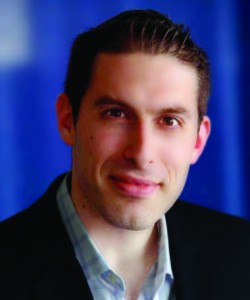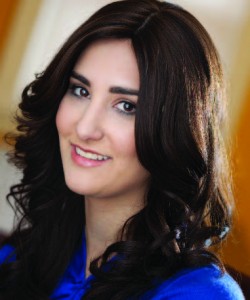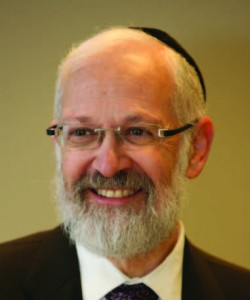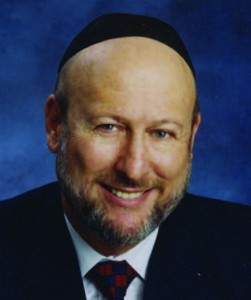With Rosh Hashanah approaching, we asked leading thinkers and educators to share with us their favorite books or seforim they rely on to help prepare for the holiness and awe of the day.
 Charlie Harary
Charlie Harary
As told to Bayla Sheva Brenner
What inspires me the most are different pieces from modern-day ba’alei machshavah that focus on the greatness of man. They emphasize that the Yamim Noraim is less of a time for us to feel terrible about ourselves and more of a time to recognize the inner greatness that is within us and how to tap into that—less fear and more awe.
I read Nesivos Shalom by Rabbi Sholom Noach Berezovsky, the Slonimer Rebbe. I actually keep a quote from the sefer in my pocket throughout the holiday. It changes the way one views the three books that are opened at this time. There’s the Book of Life, into which the righteous are automatically entered; the Book of Death, into which the wicked are automatically entered and the book in which the beinonim (neither completely wicked nor completely righteous) are inscribed until they’re judged on Yom Kippur. If the ultimate goal is just to be a beinoni, that’s not very motivating for me.
The Nesivos Shalom speaks about how we can actually write ourselves into the book of our choice. It states: “If a person accepts upon himself that he wants to fulfill his mission here in this world and fix what needs to be fixed, then he is writing himself into the Book of Life.” The purpose-driven life is the righteous life. Whether you’re a big rabbi or an attorney, you could look at your life and say, “This year is going to be filled with more purpose.” That awareness puts you in the good book.
Charlie Harary, Esq., is a prolific motivational speaker, CEO of H3 & Co, a private equity company based in New York, and associate professor of management and entrepreneurship at Yeshiva University’s Sy Syms School of Business. He is also a senior lecturer for the Orthodox Union, Aish HaTorah and NCSY.
Bayla Sheva Brenner is senior writer in the OU Communications and Marketing Department.
 Allison Josephs
Allison Josephs
As told to Bayla Sheva Brenner
My youngest is three-and-a-half. At this stage in my life, I don’t have the mindspace or time to work on a Ramban with a chavruta. For young moms, chronically chasing after children and lacking sleep doesn’t leave you much time [to learn]. You often wonder, “Where am I holding spiritually?” [One needs to remember that] this is a stage. You are doing what you need to be doing right now.
My favorite approach is when an author takes a lot of different sources and shows how there is an overriding unexpected theme, one that you hadn’t looked at before. A book that I’ve wanted to get to for a while—written by one of my teachers—is Rabbi Ari Kahn’s Emanations: In-depth analysis of the Jewish holidays through the prism of rabbinic perspective (Jerusalem, 2002). He brings in Midrashic, aggadic and mystical sources with deep and beautiful ideas on the holidays.
I also enjoy learning from AlephBeta.org, an innovative online Jewish learning site run by Rabbi David Fohrman. The segments are short; you can do them in less than an hour. He brings out revelations from the text, patterns that you’ve never noticed before. It provides a fresh perspective that’s very meaningful.
The nice thing about Rabbi Kahn’s sefer and the Aleph Beta classes is that they don’t require huge time commitments, but are enough to fill yourself up with something to think about and share with others.
Founder of Jew in the City, a popular Jewish outreach site, Allison Josephs was named one of NJOP’s Top Ten Jewish Influencers in 2012 and has been quoted or written about in numerous publications and media outlets, including The Wall Street Journal, CNN, The Daily Beast, Huffington Post and Yahoo News.
Bayla Sheva Brenner is senior writer in the OU Communications and Marketing Department.
If procrastination is a sin, then writing this piece is just going to increase my teshuvah debt by the time you read this. I can’t decide what to learn! Here’s my dilemma: I just don’t respond well to much of contemporary musar. That’s not a good thing. I’m jealous of those who can listen to presentations and walk away feeling genuinely inspired. My training, personality and history of encounters with giants of the previous generation all conspire against my reacting the same way. Unless a musar talk contains some creativity or genuine new insight, it leaves me flat. In self-defense, I will point to the introduction to Rav Kook’s Ein Ayah, which openly makes the claim that people really involved in learning are often dismissive of musar aimed solely at pulling on the heartstrings. Their cerebral nature demands that it engage and exercise the brain as well.
That leaves me with two choices. I can go to classics of the Rishonim (medieval commentators), because the profundity, precision and brevity with which they write inevitably turns reading any passage into a head trip, at least in part. That was the route I took last year, when I did a slow reading of “Sha’ar Cheshbon HaNefesh” in Chovos Halevavos, by Rabbeinu Bachya ibn Paquda. It has us take stock of ideas and arguments that we overlook too often in our relationship with Hashem. In a sense, that is the entire purpose of the Yamim Noraim, so it seemed like a good choice.
Or I can turn to more recent works, at least those that insist on looking at primary sources on a deeper level. Rav Hutner’s Pachad Yitzchak works for me on any yom tov. Increasingly, Asufas Ma’arachos by Rav Chaim Yaakov Goldvicht, the founding rosh yeshivah of Yeshivat Kerem B’Yavneh, does the same. The sichos of Rav Avigdor Nebenzahl, former rav of the Old City of Jerusalem, have done the trick in the past. In a very different style—but having great impact at the time—are sections of Rabbi Chaim Friedlander’s Sifsei Chaim that parse the Yamim Noraim davening, line by line.
Chances are, however, that I will succumb to the desire to feel something directly tugging at the heartstrings. If so, I will turn to the reliable sefer that marries heart to mind particularly successfully: Nesivos Shalom by the Slonimer Rebbe. Specifically I will look for topics in avodas Hashem from among the many offerings, and choose the ones I am most in need of shoring up.
It could be a long Elul.
Rabbi Yitzchok Adlerstein is the director of interfaith affairs for the Simon Wiesenthal Center. He is also a contributing editor to Jewish Action, and a founding editor of Cross-Currents.com.
Rachel Cohen
Shortly before Rosh Hashanah last year, a friend showed me a bound volume and proudly exclaimed, “My son wrote this book!” He did what? He was only eighteen when he wrote it. A family friend had passed away, and he decided to memorialize the man’s qualities. Never mind that he had never published anything before; he had an idea and took action. He typed it up, had it edited and printed. I was impressed, and wondered what was stopping me from acting on some of my ambitions. If a teenager could write a book, what else could I accomplish?
During the Yamim Noraim, we focus intensely on defining our potential, but I’ve always found it difficult to concretize that vision once the holidays are over. On a deeper level, these are lofty days when we’re in the spiritual world of thought—we’re even compared to angels as Neilah closes—and the challenge is moving from the abstract “world of thought” into the physical “world of action.” So how do we execute this and what can we read for inspiration?
I’ve learned that there’s a two-step process. First, when the fire of inspiration is under your feet, make a binding commitment that you might not make when you’re overthinking it. For me, biographies of no-nonsense people who made superhuman commitments are inspiring at this time of year; my favorites are Holy Woman: The Road to Greatness of Rebbetzin Chaya Sara Kramer by Sara Yoheved Rigler (Brooklyn, 2006) who, among other things, cared for several disabled children left at her doorstep, no questions asked and A Tzaddik in Our Time: The Life of Rabbi Aryeh Levin by Simcha Raz (Nanuet, NY, 2008), who worked tirelessly on behalf of Jewish prisoners and patients, always with a pleasant demeanor. When I’m feeling moved by the massive undertakings of great individuals, I sometimes take a step forward in an area where I previously hesitated.
The purpose-driven life is the righteous life.
Step two is acquiring the habits to follow through on our commitments—whether we’re aiming to improve our relationships or our character or to take on a new responsibility to contribute to our community. But where do we find the time? Various educators have taught me that we don’t need to take time off from our daily busy routines to maximize our potential in the various spheres of our lives. Instead, we can aggregate small chunks of downtime over several weeks or months to produce big results. Although not your typical teshuvah-themed literature in preparation for the Yamim Noraim, a great book on this topic is The Slight Edge. The author, Jeff Olson, recommends “simple productive actions, repeated consistently over time,” demonstrating how “the things you do every day . . . that don’t look dramatic” can compound. As I am an organizationally deficient person, these concepts help me convert five free minutes on my commute or before bedtime (when I might otherwise waste time on my smartphone) into a valuable resource, by using the time to learn something or connect to a friend.
P.S.: For those with limited time for reading, I’ve gained many practical tools for self-actualizing from evening teleconferences offered by Rabbi Adam Jacobs (internalachievement.com/courses, Elul prep course) and Rabbi Aryeh Nivin (newchabura.com).
Rachel Cohen is a tax attorney at an international law firm based in New York. She speaks periodically for various Jewish organizations including as host of a lunchtime learning program for women in Manhattan as part of the Aish Center’s Food for Thought network.
It is all too easy during the awe-filled days between Rosh Hashanah and Yom Kippur to become utterly overwhelmed with remorse. And this is surely how it should be. However, intense atonement and self-evaluation can evoke such profound embarrassment at one’s weaknesses and failures that self-improvement can tip over into self-loathing. Then, what should be an uplifting and positive experience deteriorates into an almost unbearable ordeal. Many who have abandoned Judaism recall their High Holiday experiences with revulsion. Yet, there is more to this period.
During the forty days from the seventeenth of Tammuz until the end of Av, Moshe Rabbeinu interceded with Hashem for the Jewish people in the wake of the tragedy of the Golden Calf. During the subsequent forty days, from the start of Elul until the tenth day of Tishrei, Moshe Rabbeinu wrote the second set of tablets which were finally presented to us on Yom Kippur. This makes it a little easier to understand he mishnah in the fourth chapter of Ta’anit describing what a joyful day Yom Kippur was and how young men and women contracted shidduchim that very day.
The High Holiday liturgy includes heart-rending passages that can literally bring one to tears. The very lengthy worship services, much of them chanted to stirring and serious tunes, impose their own gravitas upon the heart of the God-fearing Jew. So, I choose my Elul/Tishrei reading to make sure I don’t overlook the sheer incandescent joy of Judaism. I select books that remind me of how the arrival of the Torah utterly transformed all of human history, making it possible for civilization to displace barbarism.
This year I am rereading George Elliot’s great novel Daniel Deronda in which she so exquisitely captures the spirit of the meforshim, calling them “the great Jewish transmitters.” Along with that I will catch up on Niall Ferguson’s Civilization: The West and the Rest, which comes close (but not all the way) to identifying the role of the Torah in sculpting the relative success of what we call Western civilization. Finally, Rabbi Yoel Teitelbaum’s Divrei Yoel on Sefer Shemot, the Book of Exodus, will help me wrap my head around the momentous events during those 120 days at Sinai 3,327 years ago.
Rabbi Daniel Lapin, president of the American Alliance of Jews and Christians, hosts the Rabbi Daniel Lapin Radio Show on San Francisco’s KSFO. Together with his wife, Susan, he hosts the Ancient Jewish Wisdom television show on the TCT network. He is the author of three best sellers and is a popular guest speaker for synagogues in Israel and in the United States.
Leah Kohn
As told to Bayla Sheva Brenner
As a teacher, I spend a lot of time preparing for classes; it’s also my private preparation for the Yamim Noraim. I have to go through many books until I find what I feel will be suitable for my students. I look for fundamental ideas that show the yom tov in a new light.
I usually go to Rav Samson Raphael Hirsch’s writings; Ohr Gedalyahu (Light of Gedalyahu) by Rabbi Gedalya Schorr; Rav Chaim Friedlander’s work Sifsei Chaim and Shem MiShmuel, by Rabbi Shmuel Bornstein, the second Sochatchover Rebbe. These sources give insights into the holiday on a deep level that is inspiring, as well as practical and relevant. And they help you approach the holiday from a fresh angle.
Rav Hirsch, for example, speaks about the Jewish calendar, pointing out that there are two beginnings of the Jewish year. Tishrei marks the beginning of our natural reality [when the world came into existence], and Nisan marks the spiritual beginning, when the Jewish people came into being. A life that reflects Tishrei, the first beginning, is likened to one who concentrates only on physicality throughout his life. He’ll have times of joy and pleasure (spring and summer), but when it comes to the end of his life, there’s only winter—there’s nothing left, only death; nothing eternal.
The other Jewish year, Nisan, starts in the spring and ends in the spring. This reflects the individual whose life is focused primarily on spirituality. Although he may experience difficulties (fall and winter), in the end his world blossoms again, bringing renewed life. When you live a spiritual life, you are connecting to eternity.
I look for textual sources that are profound and change your way of thinking, material that provides fresh, elevating insights. I seek seforim that offer a different outlook on the holiday—and on life.
Rebbetzin Leah Kohn is the director of the Jewish Renaissance Center, an adult learning center for women in Manhattan. She also heads Kivun, a curriculum building and teacher training program working with Jewish studies teachers in Canada, Israel and the US.
Bayla Sheva Brenner is senior writer in the OU Communications and Marketing Department.

